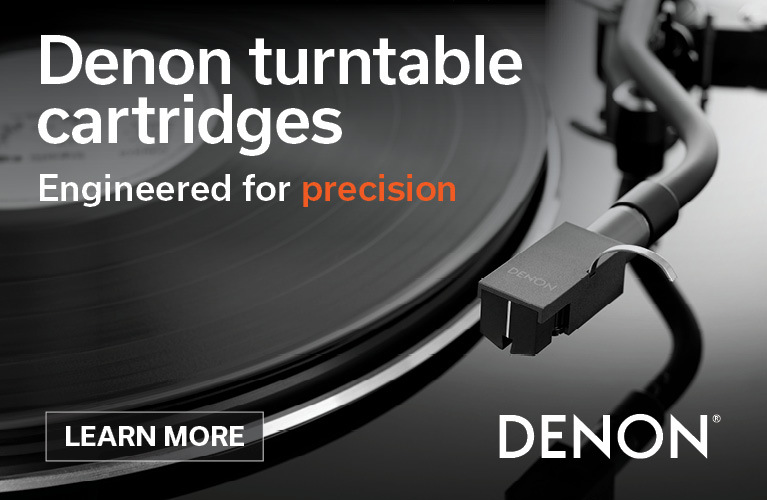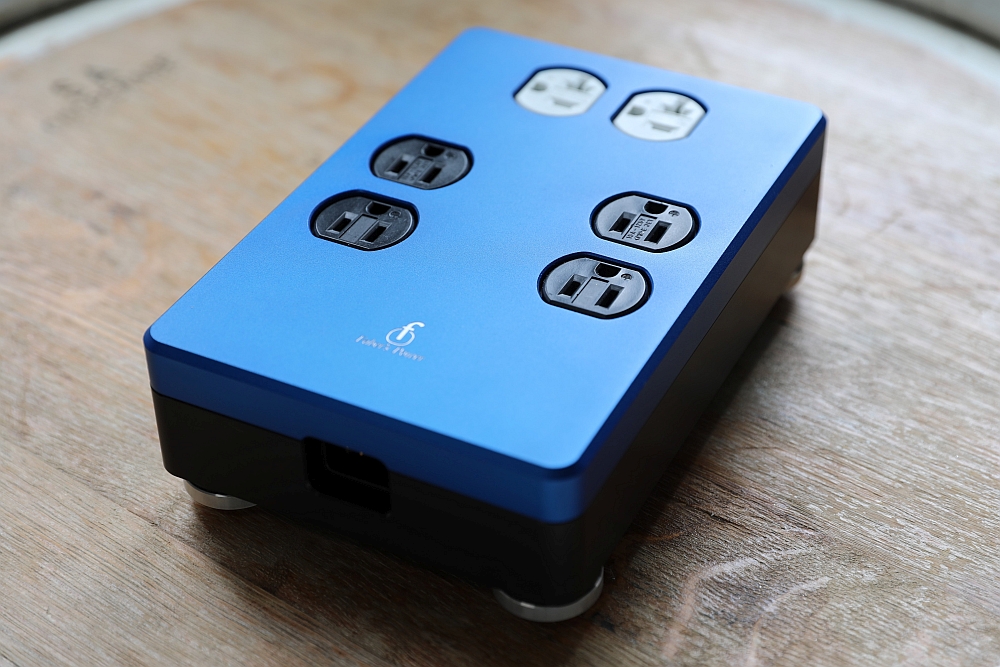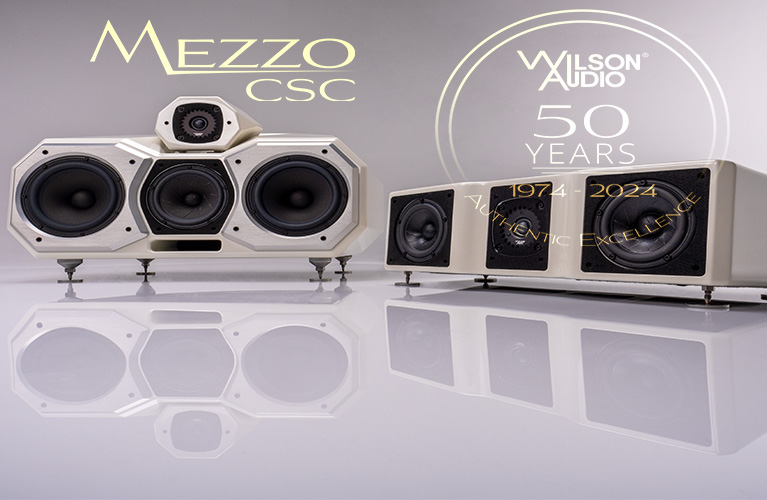During the early days of taking up this hobby, there were certain chapters of audiophile lore that I found harder to swallow than others. While it’s not hard to hear the changes to a system made by switching to a different component, it can be hard to reach a consensus about the effect of upgrading cables and other ancillaries… It just couldn’t work, right?
I mean, think about it. A cable’s just a piece of wire, and electrons are electrons. Provided the wire acts as a conductive conduit for the path of the audio signal, it should theoretically get the job done. But there remains a more tenuous rift between the camps of believers and non-believers than you might think. I understood that certain physical attributes of a cable impacted both bandwidth and transient responses however, at the time, the subtler aspects of cable design and their impact on sound eluded me.
One day, I decided to bite the bullet. I bought the cheapest pair of AudioQuest interconnects I could, using it to channel the output from what was at the time, my best audio component, a Krell KPS-20i. Sure enough, I could hear what all the fuss was about. In the ensuing months and years, the experiments continued such that I now own cables pricier than a lot of nice systems. I realise many people would regard that as stupid (and infer on that basis that I too, am stupid), but I’m more than comfortable that under any given circumstance, I can hear what those cables are doing and can therefore justify their presence in my systems. In some cases, I’ve heard certain cables impart more of a positive impact on system sound than certain component upgrades (seriously) and if someone could, to my ears, make a better cable for a fraction of the price, then that would be the cable I’d buy.
In no way dissimilar to interconnect and speaker cables, I’ve also come to hear the enormous differences facilitated by properly designed power filtration/distribution systems and associated power cables. Perhaps due to the fact that they are in principle changing how the component forms the signal rather than just assisting in passing it down the chain, their deployment in any well-conceived high-end system is utterly indispensable.
Controversial though it may be, I’ve come to appreciate that signal transmission is a nuanced black art, tip-toeing a very thin line between science and plain-old mystery. Some of it is explainable with propagation speeds, resistivity, impedance, capacitance, skin effects, dielectric biasing, frequency response, shielding and winding geometry, metallurgy, connector design/eddy currents and even soldering/crimping technique; but the rest of it is frankly, beyond me. Nevertheless, like they say, the proof is in the pudding.
At the recent 2017 Melbourne Audio Show, I wandered into the PuraSound room featuring electronics and speakers from Italy’s Grandinote connected up with Skogrand interconnects and speaker cables, leaving the power duties to a brand that was relatively new to me – Faber’s Power.
After piquing my curiosity to the degree in which their presence had shaped the easy and fatigue-free sound I heard, I expressed interest in reviewing a range of Faber’s Power gear for your reading pleasure. Now having spent a few months playing around with them in my own systems, I feel I have an answer to that question. So without further delay, let me introduce you to the ‘Faber Six’ power distributor, La Potenza power cable and The Faber’s Power Grounding Box.
La Potenza Six
The Faber ‘La Potenza’ Six is (surprise, surprise) a six outlet power distributor designed to form the hub for your system’s power. The case consists of what appear to be two rather heavy CNC-milled “space-grade” aluminium alloy billets sandwiched together, imparting a very solid and quality feel. The lower section of the product is anodised satin black, while the upper plate may be ordered in a variety of colours (silver, yellow, red or blue) with European (Schuko) or US-style Oyaide receptacles. The review sample came fitted with a vibrant Padova blue upper section featuring three Oyaide SWO-DX ULTIMO duplex sockets (one of which is a high current variant with higher grip strength than an angry Silverback gorilla). The inlet is an IEC C14 (15A) type, mounted on the unit’s side. Elastomer rings sit between the high quality height-adjustable stainless steel feet and main casing, acting to damp the interface between them. The La Potenza was absent of any switches or unnecessary embellishments. A re-designed version of the US-plug variant is reportedly in the works, with added weight, a grounding lug and improved isolation.
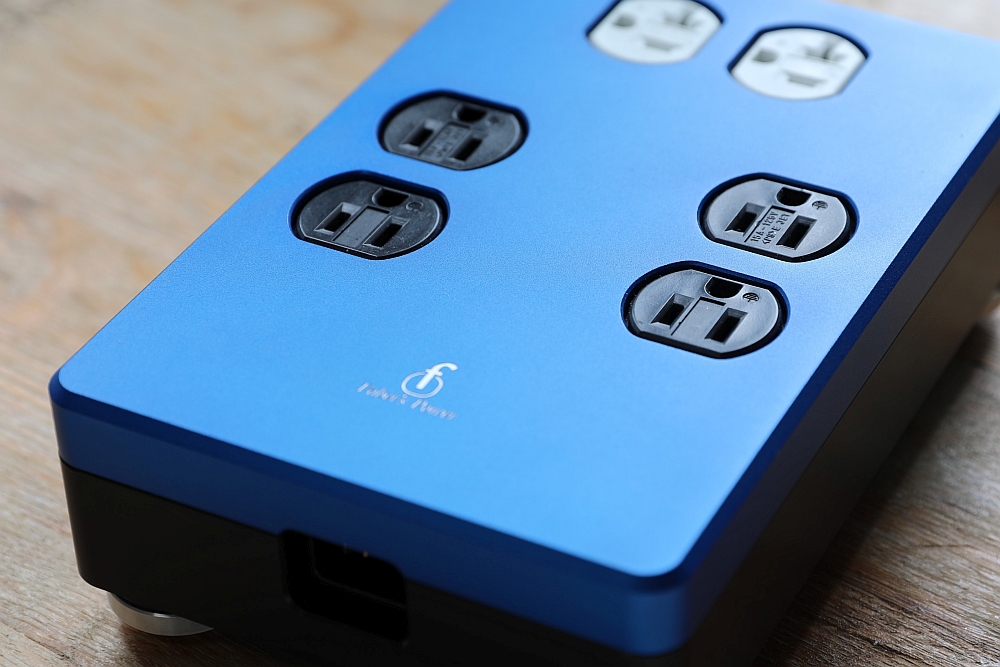
I asked Faber’s Power proprietor, Fabrizio Baretta about the unit’s workings and here’s what he had to say:
The Faber Six is a very good device to tame dispersed currents because it is drilled from a solid block of aluminium and each conductor is shielded from one another, also through many drilled channels. [Faber’s Power] are against any active filter, capacitor, resistor or inductance in the current path as they may cause loss of dynamics and attenuation of high frequencies.
La Potenza Power Cord
Fabrizio’s first products were his cables (Faber’s Cables) and in particular, he believes that power cables are supremely important due to their direct intervention in the operation of electronics’ power supplies.
All [Faber’s Power] cables are made entirely by hand, starting from military-grade silver plated multi-strand copper wire insulated with Teflon. The material is important but the geometry is much more important. I proceed to interlace the wires in groups of eight with an anti-inductive geometry and create different layers [depending on the level of the cable – the La Potenza is the flagship] before proceeding to shielding. The effects of a good power cord are manifested in cleaner sound, greater control of the low frequencies, reduction of the background noise, increased harmonic richness and expansion of the soundstage. I suggest using power cables with a length of not less than one and a half meters, and to place the best cable upstream in the Hi-Fi chain.
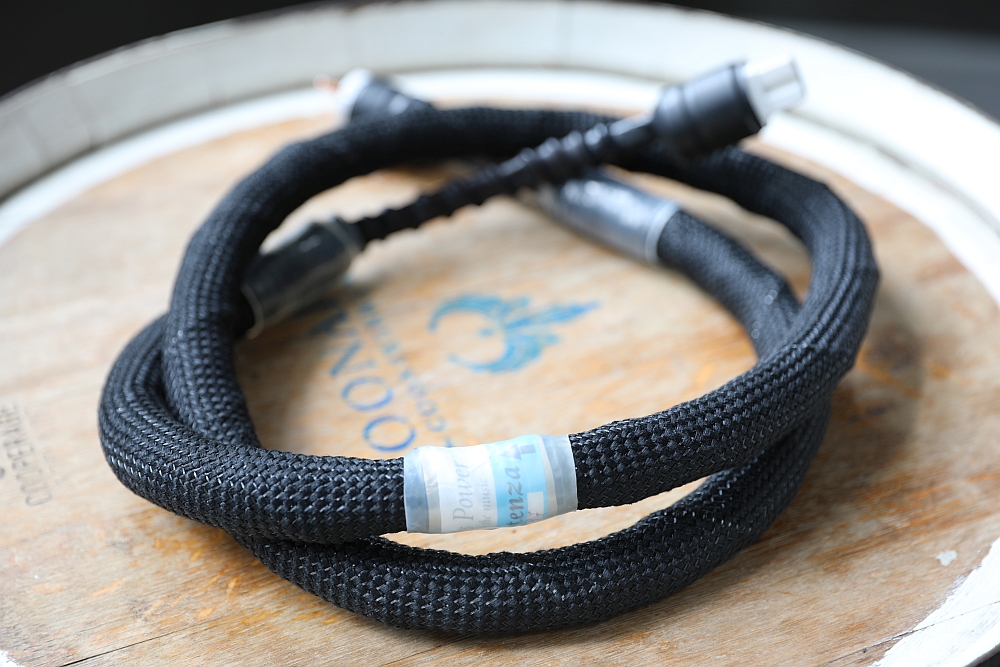
The La Potenza is a thick, medium weight and very flexible design featuring a soft basket-weave cladding overlying the tube-like body of the cable, finished with a plastic capping and overlying heat shrink towards the ends. The heat shrink extends up the distal and proximal ends of the cable under which, what is presumably the earth conductor, spirals around the active and neutral conductors. The review sample was a handy 2m length terminated with Australian 3-pin 10A and IEC C15 plugs.
Grounding Box
As arguably the most interesting member of this review trio, I have left discussion of The Grounding Box to last. Though almost all high-end components feature earth pins designed to interface each component with the electrical ground of your home, there has recently been a surge in available options to drain parasitic circulating currents away from your system through a priority path, as it were, to improve the sound of your system by increasing the signal-to-noise ratio, revealing subtle performance elements and details that formerly remained buried beneath a haze of low-level detritus.
Understandably controversial in their operation and often ludicrous in their pricing, grounding boxes weren’t really ‘a thing’ until fairly recently when a number of manufacturers launched their solutions to this often overlooked problem. Examples from Tripoint, Telos Audio and EnTreq are the ones that really spring to mind, and you don’t have to look very hard at audio forums to find vast numbers of audiophiles extolling the benefits of grounding.
I own a grounding box that I use in my reference system and cannot exaggerate the significance of improvements in almost every parameter of the sound of my system secondary to it’s presence. Just like appropriate power filtration and cables, I implore you to give one a try… I did, and then I didn’t send it back!
Here’s what Mr Baretta of Faber’s Power has to say on the issue:
First of all, it is our common experience that each hifi system does not sound always the same. Why? The answer is in the dispersed currents that run on the ground connection through the chassis of each electronic device. In fact, the chassis of an electronic device is like a Faraday cage, that prevents the electric noise present outside to enter the component, but at the same time, prevents the exit of noise (static currents, electrostatic charges, electro-magnetic flux generated by transformers, etc) produced by the electronic components itself. This [broadband noise] does not always find a way out through the ground connections and often tends to move toward the electronic components that have a lower electrical potential, always choosing paths with the lowest impedance and creating interference with the low-level audio signal.
Another important point is to realise how much noise is coming in from the power cords [from noisy switching devices within the household electronic circuit]. The ground wire is among the most delicate, because the whole system is referenced throughout it to the home earth wire. When you connect the chassis of an electronic device (through a chassis screw, the ground pin or RCA plug) to our Grounding Box, you create a preferential ‘highway’ for all those disturbances that, instead of remaining around the system, go out to Earth.
Remaining very close-lipped about the contents of the box and it’s workings, Fabrizio revealed only that The Grounding Box contains a “mix of different metals and dielectrics, together with a special kind of wood” to control resonances, with “simple passive circuits” featuring “carefully chosen components”. No transformers, capacitors or active circuits were used, as he feels that they often limit the dynamics of the audio system.
The Grounding Box is a rather large yet elegant-looking device. It features pale red matte-feel upper and lower sections formed around a central body comprised of a beautifully finished plywood sandwich. Three high quality speaker terminal lugs on the back allow the connection of banana or spade ground leads (presumably more than one could be connected to each post simultaneously). An IEC C14 receptacle allows connection of the supplied, high-quality power cable from the unit to the wall (an Aussie 3-pin plug with only the earth pin connected was supplied with my review sample). Stainless steel feet identical to those found on The Six were also used on the Grounding Box. A small faceplate adorned the top surface of The Box, bearing the Faber’s Power branding.
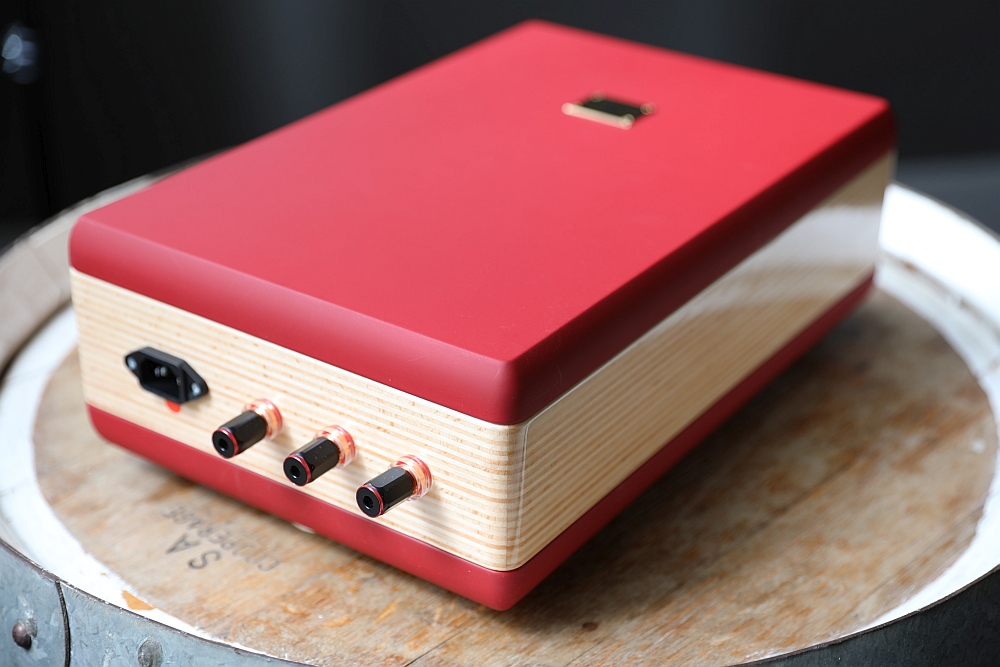
Despite its high-quality construction, weight and feel, the unit is highly vulnerable to scratches and unfortunately, already had a large number of fine imperfections in the red surfaces by the time I received it due to its previous trade show appearances. Careful handling is advised, as it’d be a shame to ruin something so attractive.
The unit came with three grounding leads to facilitate connection to your components. Oddly, though each cable was terminated with banana plugs for connection to the terminals on The Grounding Box, the other ends were a mix of spade, female RCA and alligator cinch connectors, meaning I was only able to connect up two of my components (the Mark Levinson No. 31 transport, by tightening the spade connector up to the chassis by loosening a chassis screw; and my Symposium Isis rack, by clipping the alligator cinch onto one of the aluminium shelves). This situation wasn’t ideal, and although I was promised some additional spade-to-spade cables to allow me to connect more equipment (in particular, my power amps and DAC), they did not arrive over the review period.
To ascertain the character of each product, individual elements were added incrementally to determine the unique contributions attributable to each component.
Listening: La Potenza
The La Potenza Six was setup in place of my usual PS Audio Juice Bar as the main power distributor in the reviewing system. The Six was run from the wall (PS Audio Power Port receptacle) via a Shunyata Anaconda VX cable. The front end was supplied from a PS Audio Ultimate Outlet HC (15A version), which was run from The Six. Halcro dM68s, Telos QAD and Telos QNR were all run directly from La Potenza (note the amps were run from the super tight high current receptacles).
The La Potenza immediately demonstrated vast superiority to the PS Audio Juice Bar. It imparted an obvious reduction in noise and hash, presenting gorgeously black backgrounds forming a better foundation for the reproduction of all aspects of the musical performance. There was an increase in overall soundstage size with particular excellence in image density and layering. Frequency response became more extended in both frequency extremes, with an apparent increase in air and mid-treble detail; and faster, tighter bass with overt improvements in textual and tonal sophistication.
Dynamics took a huge leap forward with far wider macrodynamic swings, and enhanced microdynamic shadings made possible by The Six’s clearly lower noise floor. In short, The La Potenza Six improved essentially every aspect of my system without itself imbuing the system with a particular sound character, and most importantly, avoided the introduction of any negative elements often associated with power products (such as tonal exaggeration, or dynamic and transient suppression).
Listening: La Potenza Power Cable
To evaluate the La Potenza, I used it as the power cable between my DBA LB-1500 line balancer and the Absolare Signature Integrated amplifier currently taking up residence in my reference system for upcoming review. As opposed to using it as a lead-in cable (effectively homogenising the system with a cable’s signature), I utilised it as the supply line for the amplifier only allowing me to instantly recognise and compare its effects on the sound of an individual component (arguably the most important component), and easily compare it to my usual reference power cable. The La Potenza was easy to route and fit snugly into the amplifier IEC inlet without sag or strain.
The sound was harmonically rich and tonally supple, with a fine development and sustain of colour and texture, particularly apparent within the midrange and mid-bass. It was at the same time, fast and authoritative, with a firm and powerful bottom end serving to provide a solid foundation to the soundstage and its elements. Instrument images were dense and highly dimensional, with no lean ‘outline-only’ style portrayal plaguing some designs sporting a similarly fast and detailed sound. Fortunately, the character of the La Potenza did not change whatsoever during the review period, implying it was already sufficiently run-in prior to landing at my doorstep.
In comparison to the La Potenza, my reference Shunyata Zi-Tron HC cable sounded marginally more spacious and open, emphasising subtle treble decay and air at the expense in the last word in timbre-development and harmonic bloom. On rock and pop, the La Potenza seemed to slightly soften the ‘edge’ of poor recordings, utterly eliminating any fatigue factor and making them easier to live with while never truncating the dynamics. On classical small-scale acoustic and jazz recordings, the La Potenza was in its prime, showcasing divinely sultry tones, albeit without the touch of extra ambience present when switching to the Shunyata cable.
Both are lovely cables, and I could easily live with either. Sadly, as with most things, you can often never have the best of both worlds and which performance you prefer will simply be a matter of taste.
Listening: Grounding Box
Connected as previously mentioned to my Mark Levinson transport and Symposium rack, the Grounding Box imparted a very subtle improvement to the proceedings. The Grounding Box was present in the system while using a variety of speakers, including the Sonus faber Amati Traditions, The Yamaha NS-5000s and my reference Dynaudio Confidence C2s.
Used in the context of the Sonus Faber or Dynaudio speakers, the Grounding Box did help to strip the music of a fine layer of low-level contamination that affected the retrieval and perception of ultra-fine details. It assisted in the reproduction of eerily black backgrounds, however it should be noted that I did not find its contribution even close to the same level of improvement brought about by the installation of La Potenza Six. By comparison, the effect of the Grounding Box was far more difficult to quantify, yet was easier to describe, in that its only real character was to produce a blacker background while seemingly having no other perceptible effect on the sound.
Interestingly, when used with the Yamaha NS-5000s (review here and follow-up here) in the system, the Grounding Box exhibited a very strange effect, appearing to indiscriminately chop off high frequency information, sounding very much like a low-pass filter. A friend who came to listen to the system at the time described the effect like inserting a ‘Dolby NR’ filter back in the days of cassette tape. I cannot think of a better way to describe this anomaly, and the phenomenon was again confirmed during a visit from SoundStage! Australia’s editor, Edgar Kramer while the Yamahas were also in use. I can only postulate that the mating was not synergistic due to the already very-so-slightly dark character of the NS-5000s tweeter.
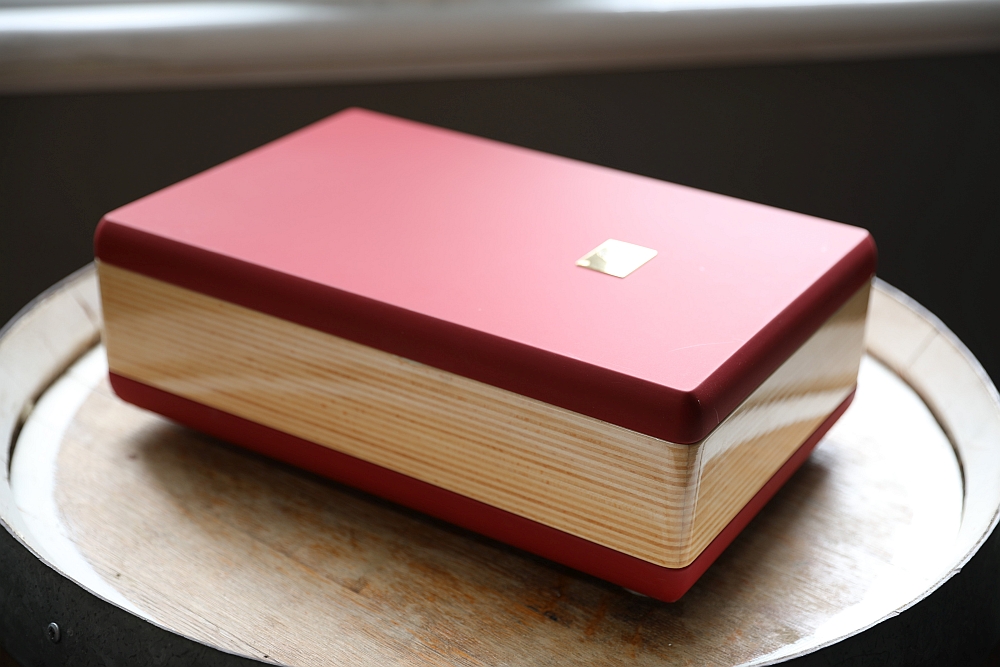
I had intended over the review period to directly compare the Grounding Box to my Telos GNR (which resides in my reference system), however as previously mentioned, additional leads were not provided by Faber’s Power therefore introducing too many confounding factors (as I would have had to use the Telos grounding leads and a different power cord with US-style plugs) to confidently ascribe any audible differences to the components themselves.
Furthermore, due to the fact that the Telos is employed in my reference system while the Faber’s Power Grounding Box was used in my review system, it would be unfair to make any direct comparisons. I will, however, state that my subjective assessment from what I can remember upon inserting the GNR into my reference system was that the Telos device made a far greater and more consistent improvement to my reference system’s performance than the Faber’s Power unit did to my review system.
Needless to say, further experimentation is needed here and I would heartily encourage you to give the Grounding Box a try. As I found it had a profoundly different effect when used with different speakers, your opinion of its effects in your system may be very different from my own.
Conclusion
Bespoke Italian brand Faber’s Power has thoughtfully provided elegantly simple yet shamelessly luxurious solutions to handle every aspect of powering your precious reference audio system. With a remarkable appreciation for materials science and the delicacy of the audio signal and the means by which it is created by our electronics, Fabrizio Baretta has produced a range of products that not only work as advertised, but do not posit absurd proprietary technologies or ‘snake oil’ theories to belie the foundations on which their laurels stand.
Their equipment quite simply works as advertised… Hearing is believing!
The Faber’s Power equipment brought a very appreciated increase in refinement and musicality to my reviewing and reference systems, without (in most cases) leading to any detrimental effects. While I would suggest careful matching and assessing of the Grounding Box with your system, I can without hesitation give my highest recommendation to La Potenza Six distributor and La Potenza power cable. Both work exceptionally well and in particular reference to La Potenza Six, represent exceptional value for money given the profound improvements offered.
Go on, give them a try… More power to you, sir!
… Josh Givorshner
Associated Equipment
System 1
- Digital:Meridian 800, Mark Levinson No. 31 transports, Meridian 861 v4 DAC/Preamplifier
- Amplifier:Halcro dm68 monoblocks
- Speakers:Dynaudio Confidence C2, Sonus Faber Amati Tradition (in for review)
- Power: PS Audio Ultimate Outlet HC, PS Audio Juice Bar, PS Audio Power Port AC receptacle, Faber’s Power Six (in for review)
- Cables:EnKlein Aeros Extreme, EnKlein Titan, Harmonic Technology Cyberlink, Shunyata ZiTron Alpha HC, Anaconda and Taipan Alpha, Vitus Andromeda
- Equipment Rack:Symposium Isis 3 level rack
- Accessories:Multiple Telos Audio components (QAD, QMT, QNR, etc.), Symposium Ultra Platform, Stillpoints Ultra SS, Herbie’s Audio Lab Gabon ebony domes, Faber’s Power The Grounding Box (in for review)
System 2
- Digital:Ypsilon CDT-100
- Turntable:TW Acustic Raven AC with Black Night motor/controller, Kuzma Airline tonearm, MySonic Labs Signature Gold cartridge
- Preamplifier:Halcro dm10, Kondo Audio Note M7, Aesthetix IO Eclipse (dual PSU)
- Amplifier:Ypsilon SET-100 Ultimate Mk. II
- Speakers:Evolution Acoustics MMMiniTwo
- Power: Shunyata Hydra Triton, DBA LB-1500 line balancer (x2), PS Audio P-500
Cables: PSC Monolith, Tara Labs Zero Edge, ZenSati #2, Shunyata ZiTron Alpha HC, Anaconda Vx, Python Alpha, Taipan Alpha, Vitus Andromeda - Equipment Rack:Taoc ASR-II
- Accessories:Acoustic Revive RR-888, Multiple Telos Audio components (QMT, QNR, GNR), Symposium Ultra Platforms, Symposium Rollerblock and Rollerblock Jr, Stillpoints Ultra SS, Herbie’s Audio Lab Gabon ebony domes
Faber’s Power AC Products
Price: La Potenza Six USA Version AU$4000, La Potenza AC Cable AU$5500, Grounding Box AU$7000
Warranty: Five Years
Australian Distributor: PuraSound
+61 406 281 051
www.purasound.com
Faber’s Power
Via Primo Levi 7
35020 Due Carrare PD
Italy
+39 335 245 375
www.faberpower.com

